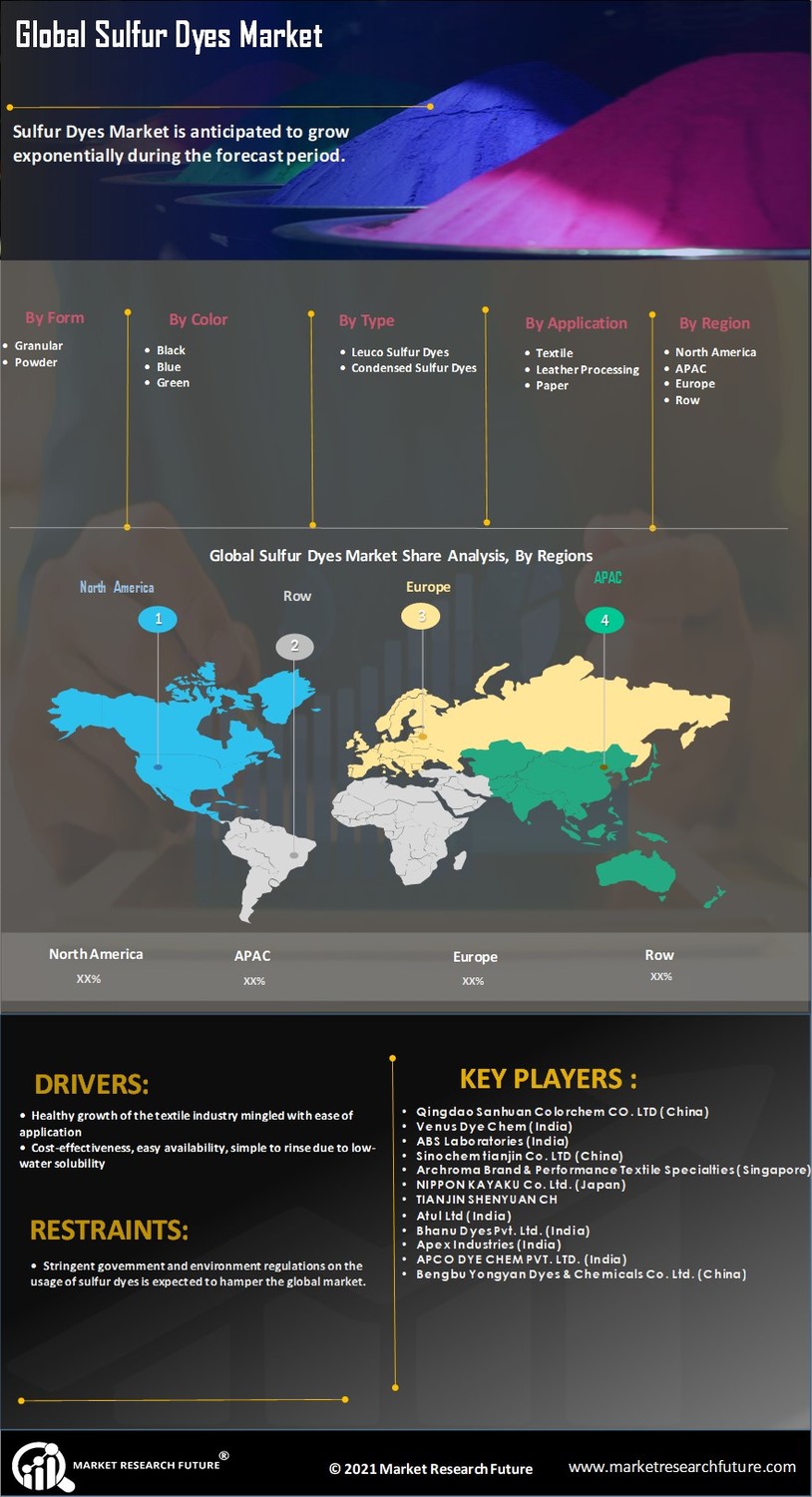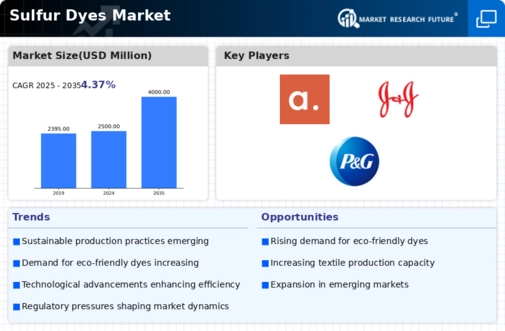Expansion of Emerging Markets
The Global Sulfur Dyes Market Industry is poised for growth due to the expansion of emerging markets, particularly in Asia-Pacific and Latin America. These regions are experiencing rapid industrialization and urbanization, leading to increased demand for textiles and related products. As local manufacturers seek cost-effective and high-quality dyeing solutions, sulfur dyes are becoming increasingly popular. The market's potential in these regions is substantial, with projections suggesting a growth trajectory that could see the market reach 4000 USD Million by 2035. This expansion is indicative of the broader economic development and rising consumer spending in these emerging markets.
Rising Demand in Textile Industry
The Global Sulfur Dyes Market Industry experiences a notable surge in demand primarily driven by the textile sector. As fashion trends evolve, the need for vibrant and durable colors in fabrics has increased. Sulfur dyes are favored for their excellent wash and light fastness, making them ideal for various textile applications. In 2024, the market is projected to reach 2500 USD Million, reflecting the textile industry's growing reliance on these dyes. This trend is expected to continue, with the market potentially expanding to 4000 USD Million by 2035, indicating a robust growth trajectory fueled by the textile industry's expansion.
Market Trends and Growth Projections
The Global Sulfur Dyes Market Industry is characterized by various trends that indicate a positive growth outlook. Current projections suggest that the market will reach 2500 USD Million in 2024, with expectations of expanding to 4000 USD Million by 2035. This growth is underpinned by a compound annual growth rate of 4.37% from 2025 to 2035. Key trends include the increasing adoption of sustainable practices, technological advancements in dyeing processes, and the rising demand from the textile industry. These factors collectively contribute to a favorable environment for sulfur dyes, suggesting a robust future for the industry.
Growing Awareness of Sustainable Practices
The Global Sulfur Dyes Market Industry is witnessing a shift towards sustainable practices, driven by increasing consumer awareness regarding environmental impacts. As consumers demand eco-friendly products, manufacturers are compelled to adopt sustainable dyeing methods, including the use of sulfur dyes. These dyes are often perceived as a more environmentally friendly option due to their lower toxicity and reduced water usage. This growing awareness is likely to propel the market forward, with projections indicating a compound annual growth rate of 4.37% from 2025 to 2035. The alignment of consumer preferences with sustainable practices is expected to reshape the industry's landscape.
Environmental Regulations Favoring Sulfur Dyes
The Global Sulfur Dyes Market Industry benefits from stringent environmental regulations that promote the use of eco-friendly dyeing processes. Sulfur dyes are often considered more sustainable compared to other dye types, as they require less water and energy during application. Governments worldwide are increasingly enforcing regulations that encourage the adoption of less harmful chemicals in textile production. This regulatory landscape is likely to drive manufacturers towards sulfur dyes, enhancing their market presence. As sustainability becomes a priority, the market may witness a compound annual growth rate of 4.37% from 2025 to 2035, reflecting a shift towards environmentally responsible practices.
Technological Advancements in Dyeing Processes
Innovations in dyeing technologies significantly impact the Global Sulfur Dyes Market Industry. Advances such as digital printing and improved application techniques enhance the efficiency and effectiveness of sulfur dyes. These technologies allow for more precise color matching and reduced waste, appealing to manufacturers seeking to optimize production processes. As these advancements proliferate, they are likely to increase the adoption of sulfur dyes across various sectors, including textiles and leather. The integration of technology in dyeing processes may contribute to the market's growth, potentially reaching 4000 USD Million by 2035 as industries embrace modern solutions.




